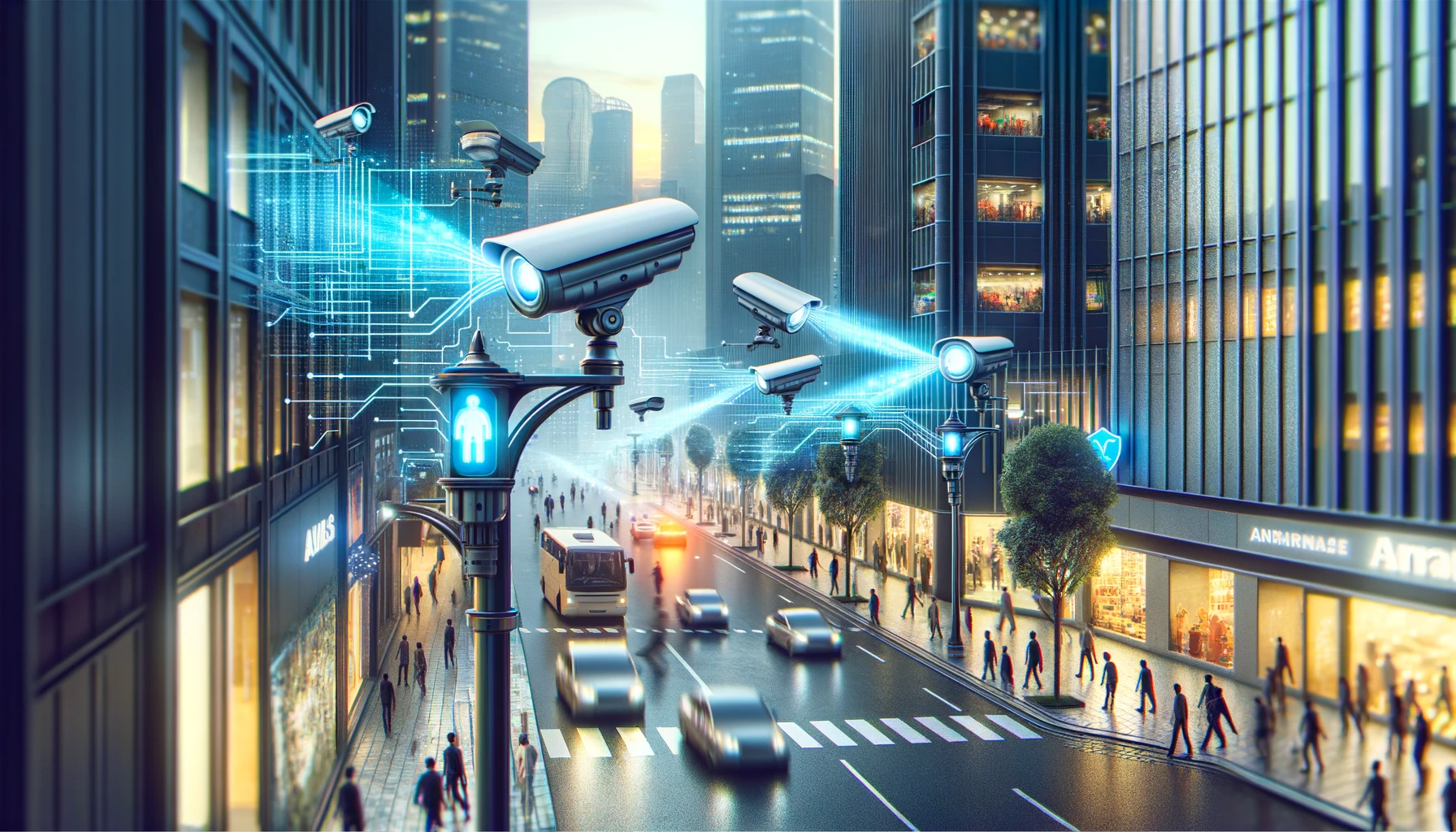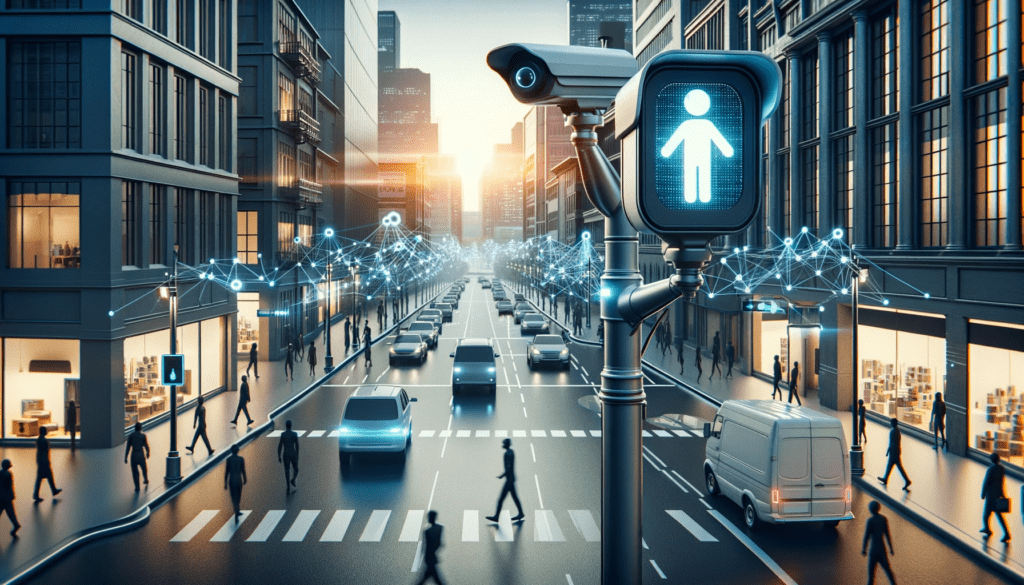The Dilemma of AI-Powered Predictive Policing: Solution or Threat?
The advent of AI-powered predictive policing marks a significant evolution in law enforcement strategies. Utilizing advanced algorithms, predictive policing employs artificial intelligence (AI) to analyze vast amounts of data, forecasting potential criminal activities and allowing law enforcement agencies to deploy resources more strategically. This sophisticated approach promises numerous benefits, including enhanced efficiency in crime prevention and a more proactive policing model that could potentially reduce crime rates. However, this innovative use of AI in law enforcement has ignited a vigorous debate: Is AI-powered predictive policing a groundbreaking tool that will revolutionize public safety, or does it pose a significant threat to privacy and civil liberties?
forecasting potential criminal activities and allowing law enforcement agencies to deploy resources more strategically. This sophisticated approach promises numerous benefits, including enhanced efficiency in crime prevention and a more proactive policing model that could potentially reduce crime rates. However, this innovative use of AI in law enforcement has ignited a vigorous debate: Is AI-powered predictive policing a groundbreaking tool that will revolutionize public safety, or does it pose a significant threat to privacy and civil liberties?
At the heart of this debate lies a range of complex issues encompassing the accuracy and impartiality of AI algorithms, the potential for invasive surveillance, and the ethical implications of algorithm-based policing decisions. This article aims to delve into the intricacies of AI-powered predictive policing, critically examining both its potential benefits in crime reduction and its associated risks, particularly regarding privacy and civil rights. Through this exploration, we seek to provide a comprehensive understanding of this modern policing technique’s multifaceted impact on society and justice.
Understanding Predictive Policing and AI
Predictive policing is a contemporary law enforcement strategy that leverages AI to anticipate and prevent criminal activities. At its core, predictive policing relies on advanced algorithms and data analytics to identify patterns, trends, and potential crime hotspots. AI plays a pivotal role in this context by enabling law enforcement agencies to process vast amounts of data efficiently and make data-driven decisions. The integration of AI in predictive policing represents a significant advancement in law enforcement practices, revolutionizing how authorities combat crime.
AI algorithms in predictive policing operate by analyzing historical crime data, socio-demographic factors, weather conditions, and other relevant variables. Through data analysis and pattern recognition, AI systems can identify areas with a higher likelihood of criminal incidents. This enables law enforcement agencies to allocate resources strategically, deploy officers proactively, and focus their efforts on crime prevention rather than merely responding to incidents after they occur.
The evolution of predictive policing has been closely intertwined with advancements in AI technologies. In recent years, machine learning and natural language processing have empowered predictive policing models to become more accurate and responsive. The integration of real-time data sources, such as social media and surveillance cameras, further enhances the capabilities of AI-powered predictive policing.
The Benefits of AI in Policing
The adoption of AI in policing offers a range of potential benefits for law enforcement agencies and communities. One of the foremost advantages is the improved allocation of police resources. AI algorithms can identify high-risk areas with greater precision, enabling law enforcement to concentrate their efforts where they are needed most. This targeted approach enhances the efficiency of resource allocation, ensuring that limited resources are deployed effectively.
AI-powered predictive policing also contributes to more effective crime prevention strategies. By identifying patterns and trends, law enforcement can implement proactive measures to deter criminal activity. For instance, authorities can increase patrols in areas predicted to experience higher crime rates, thereby deterring potential offenders and reducing crime.
Several case studies and examples highlight the positive impact of AI in policing. Cities like Chicago and Los Angeles have implemented predictive policing programs that have shown promising results in reducing crime rates. These initiatives have demonstrated that AI can assist in identifying crime trends and deploying resources accordingly, leading to safer communities.
Additionally, AI aids in promoting unbiased, data-driven decision-making in law enforcement. AI algorithms do not possess inherent biases and can analyze data objectively. This reduces the likelihood of discriminatory practices in policing, as decisions are based on empirical evidence rather than subjective judgment. AI can assist in ensuring a fairer and more just criminal justice system.
Risks and Challenges
Despite the potential benefits, the use of AI-powered predictive policing raises significant concerns related to privacy, civil liberties, and bias. One of the primary concerns is the potential invasion of privacy through extensive data collection and surveillance. AI algorithms rely on various data sources, including social media, surveillance cameras, and public records. The aggregation of such data can lead to heightened surveillance, raising questions about individual privacy rights and the boundaries of acceptable law enforcement practices.
Algorithmic bias is another pressing issue. AI systems are only as unbiased as the data they are trained on. If historical crime data contains biases or reflects societal inequalities, AI algorithms may inadvertently perpetuate or exacerbate these biases. For example, if minority communities are historically over-policed, predictive policing models may allocate more resources to these areas, intensifying the cycle of bias and discrimination.
Transparency and accountability pose additional challenges in the realm of AI-driven law enforcement practices. AI algorithms are often complex and difficult to interpret, making it challenging for the public and even law enforcement agencies to understand the decision-making process. This lack of transparency raises concerns about accountability when AI systems are used to make critical policing decisions.
To address these challenges, it is essential to strike a balance between the potential benefits of AI-powered predictive policing and the protection of civil liberties and privacy. Policymakers, law enforcement agencies, and technology developers must work collaboratively to establish clear guidelines, ethical standards, and mechanisms for oversight in the use of AI for policing. This approach ensures that the advantages of AI in law enforcement are harnessed while mitigating the associated risks and challenges.

Ethical and Legal Implications
Predictive policing powered by AI raises a myriad of ethical and legal concerns that demand careful consideration. One of the foremost ethical dilemmas revolves around the issue of consent. Citizens may not be aware of the extent to which AI systems analyze their data or may not have provided explicit consent for such data usage. This lack of informed consent can infringe upon individuals’ privacy rights, as predictive policing often relies on data collected without their knowledge or consent.
The proliferation of surveillance technologies in predictive policing amplifies these concerns. AI systems can aggregate data from various sources, including surveillance cameras, social media, and public records, to create comprehensive profiles of individuals and communities. This extensive surveillance has the potential to erode personal privacy, as individuals may feel constantly monitored and subjected to unwarranted scrutiny.
Moreover, there is a risk of AI-powered predictive policing infringing upon individual rights, particularly in marginalized communities. Over-policing and biased data can lead to disproportionate law enforcement activities in specific areas or among certain demographic groups. This not only violates individual rights but also exacerbates societal inequalities and injustices.
From a legal standpoint, the use of AI in policing is often governed by a patchwork of regulations that may not adequately address the unique challenges posed by these technologies. There is a pressing need for comprehensive and up-to-date legal frameworks to regulate AI in policing. Such regulations should encompass issues of data privacy, transparency, accountability, and oversight.
The broader societal implications of AI-powered predictive policing cannot be underestimated. Relying heavily on AI systems for law enforcement decisions can fundamentally transform the relationship between citizens and law enforcement agencies. It may erode trust and raise concerns about the objectivity and fairness of policing practices. Additionally, it may inadvertently discourage community engagement with law enforcement agencies, hindering crime-solving efforts.
Balancing Technology and Human Oversight
To address the ethical and legal challenges associated with AI-powered predictive policing, a balanced approach is essential. Law enforcement agencies should aim to strike a balance between leveraging the advantages of AI and maintaining human judgment and oversight. While AI can assist in data analysis and pattern recognition, human officers must retain the authority to make critical decisions and exercise judgment.
Incorporating community perspectives and ethical considerations is crucial in the development of AI policing strategies. Community input can help shape the ethical guidelines and priorities that AI systems should adhere to. This collaborative approach ensures that the values and concerns of the communities served by law enforcement agencies are taken into account.
Experts in AI and ethics should play a pivotal role in shaping a responsible and effective framework for AI in policing. Their insights can inform the development of algorithms, data usage policies, and ethical guidelines that prioritize fairness, accountability, and transparency.
Conclusion
In conclusion, AI-powered predictive policing presents both opportunities and challenges for law enforcement and society at large. While it holds the promise of enhancing crime prevention and resource allocation, it also raises ethical dilemmas, privacy concerns, and the potential for bias. Striking a balance between the benefits of AI and the protection of civil liberties is essential. Policymakers, law enforcement agencies, and communities must work together to develop responsible AI frameworks that prioritize fairness, transparency, and accountability. The future of AI in law enforcement will undoubtedly shape the nature of policing and its impact on society, making it imperative to tread carefully and ethically in this evolving landscape.
